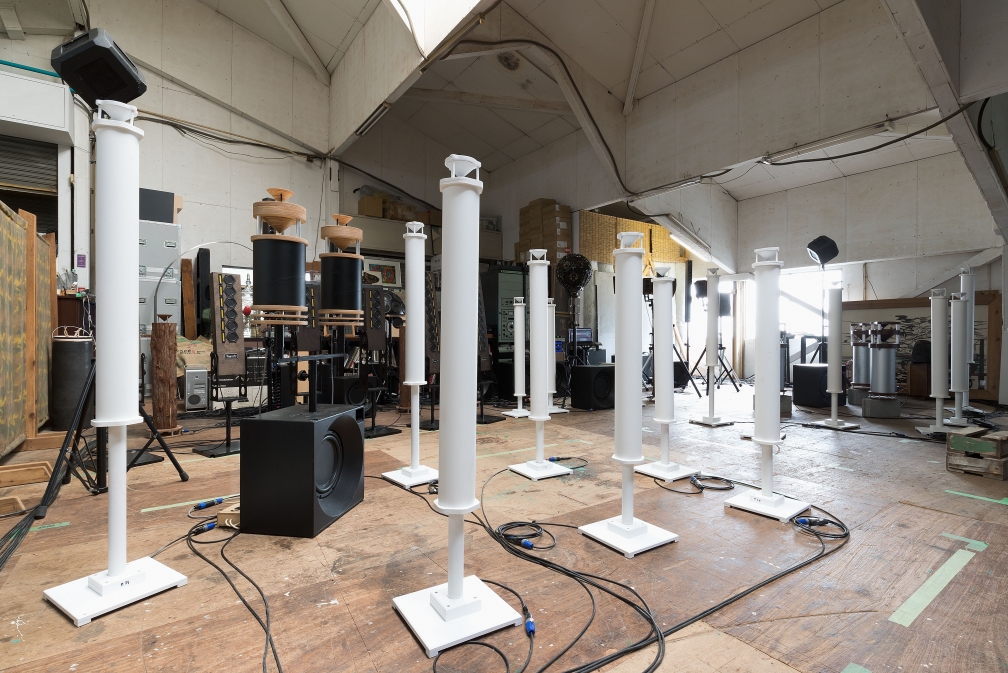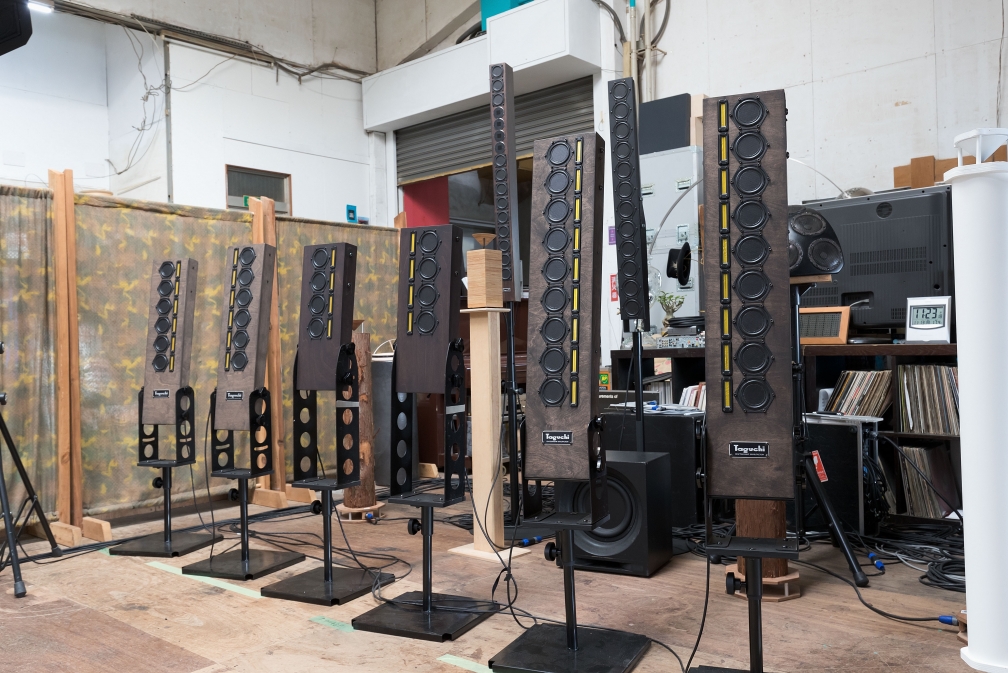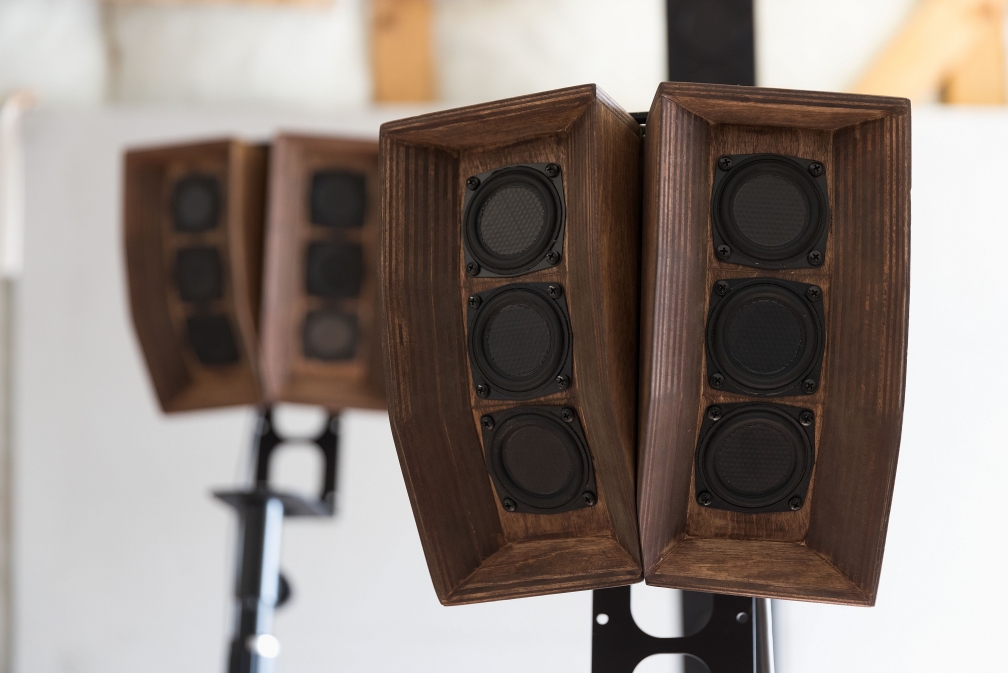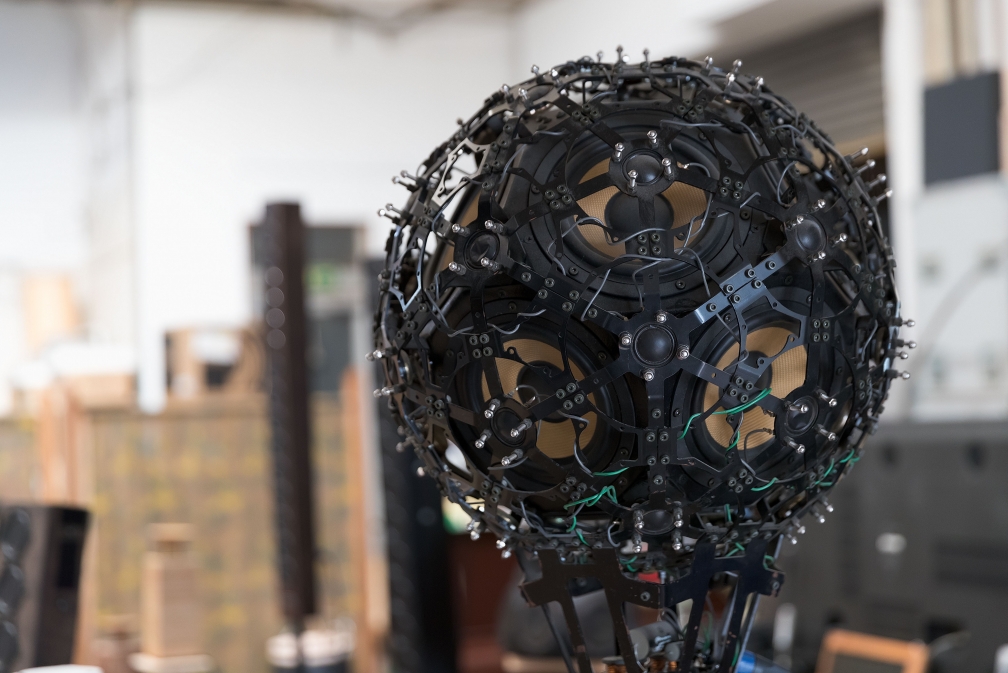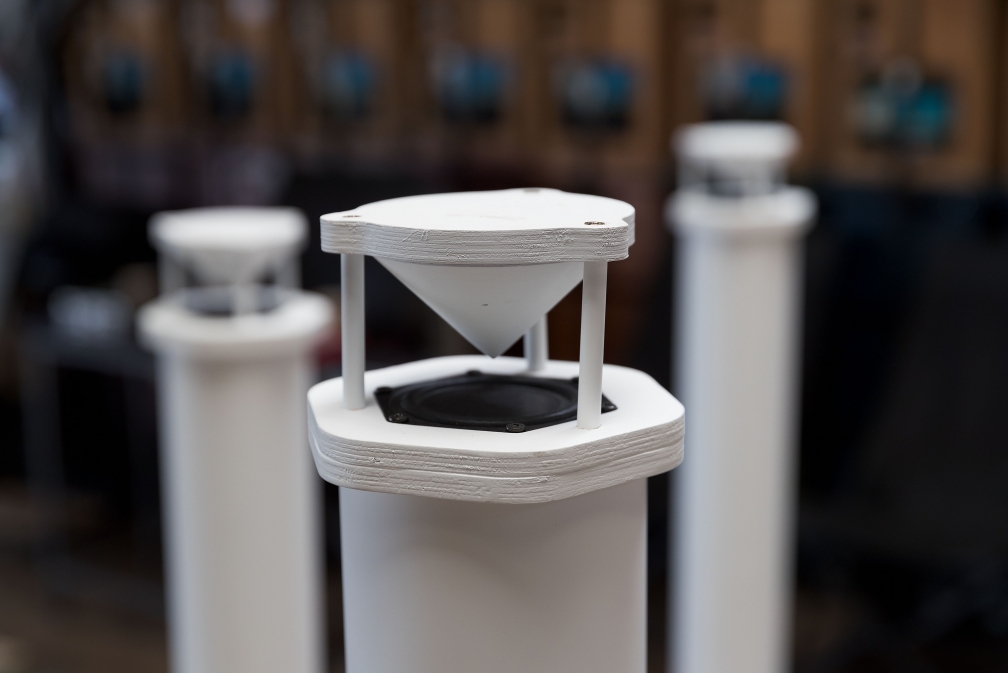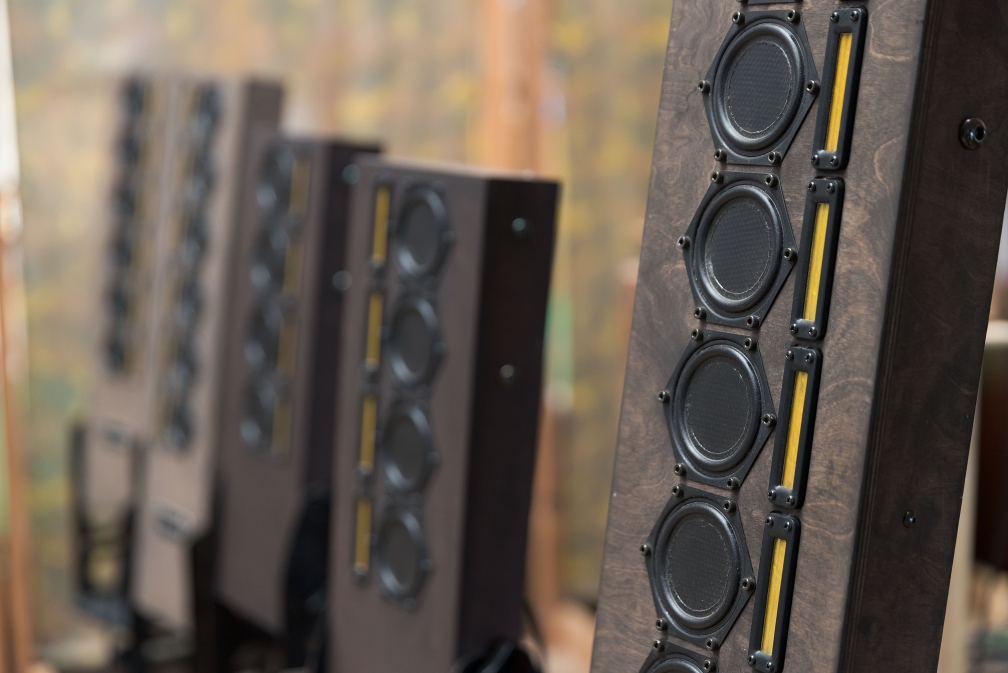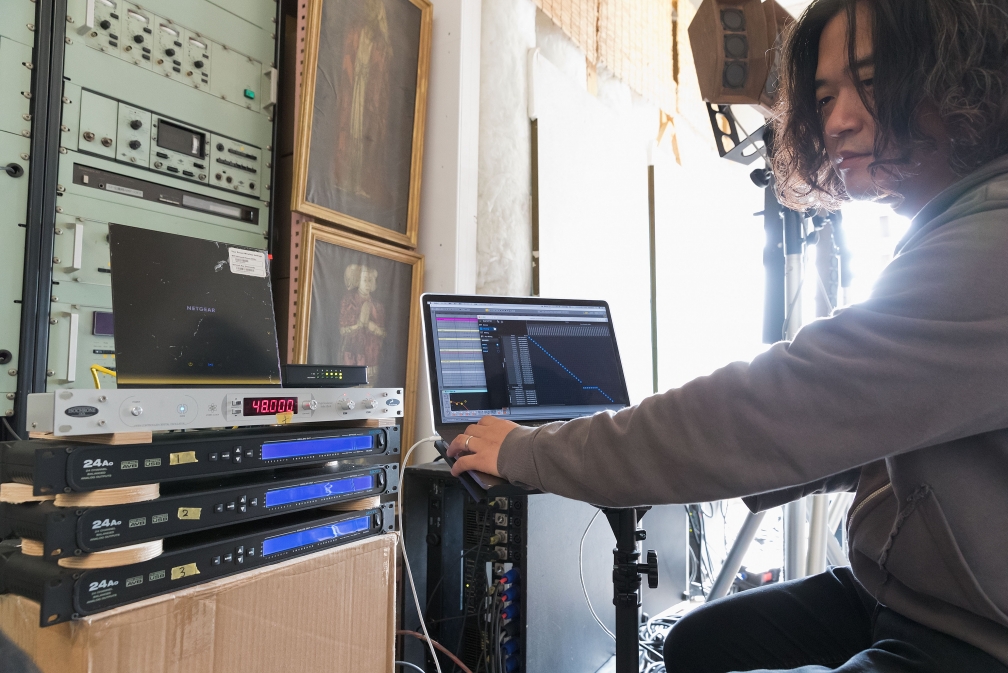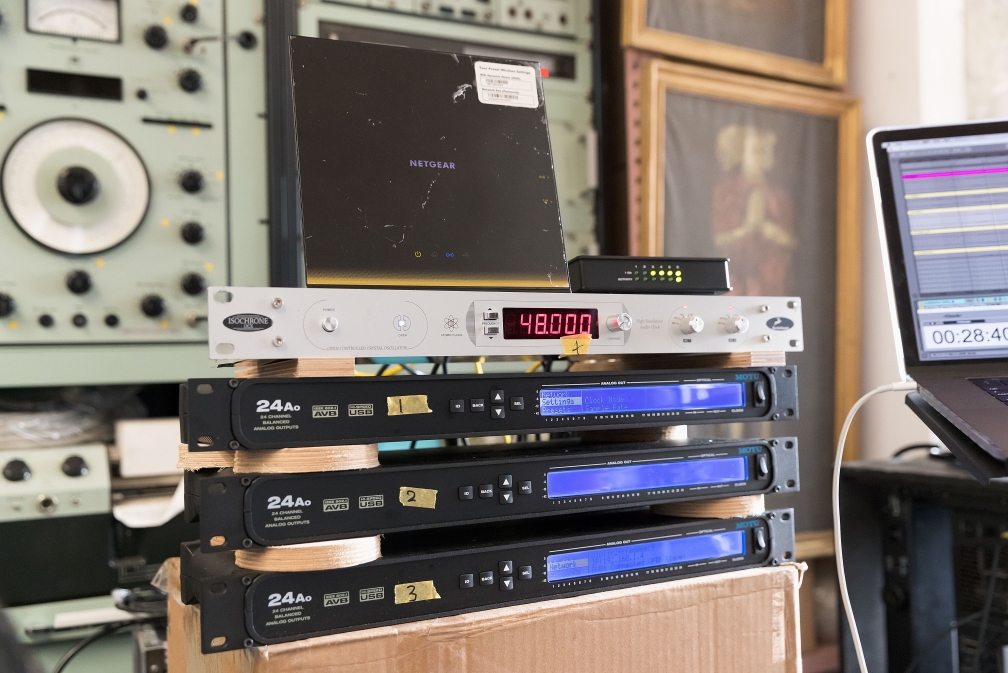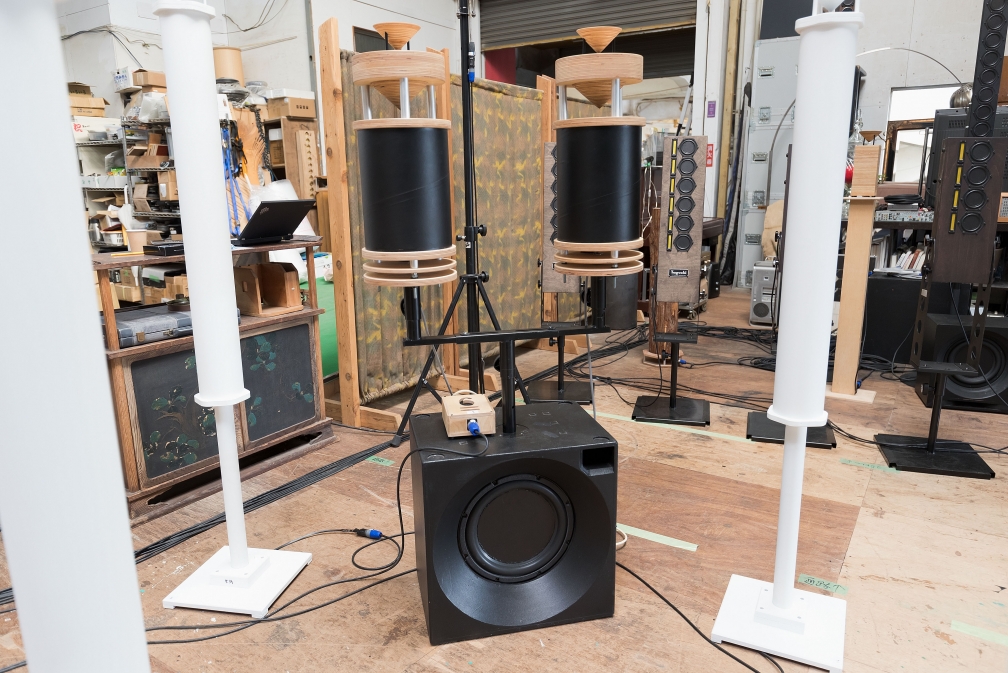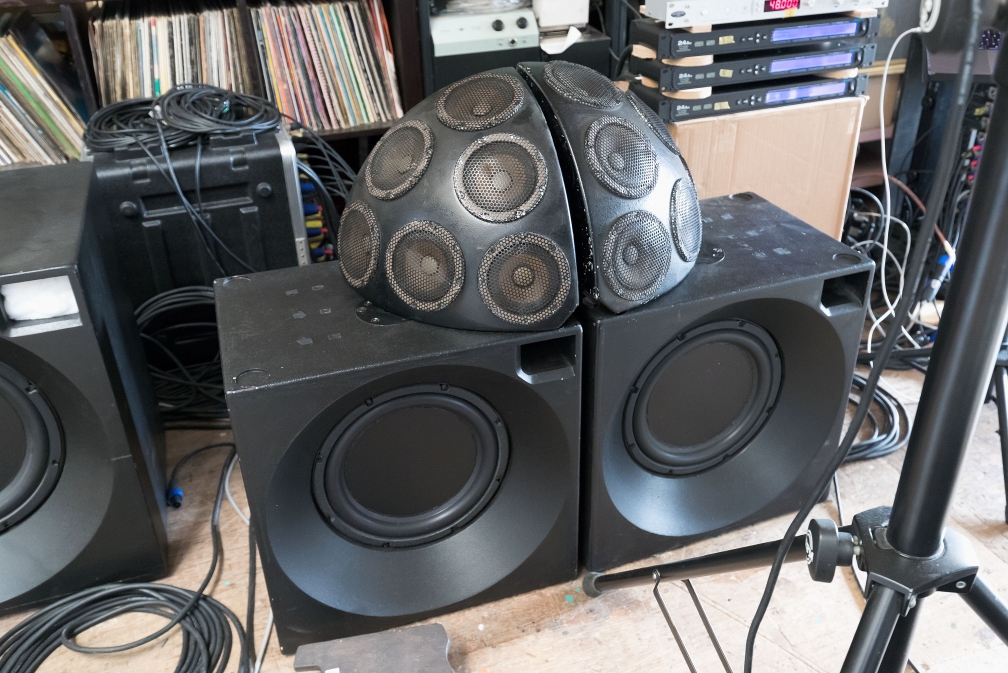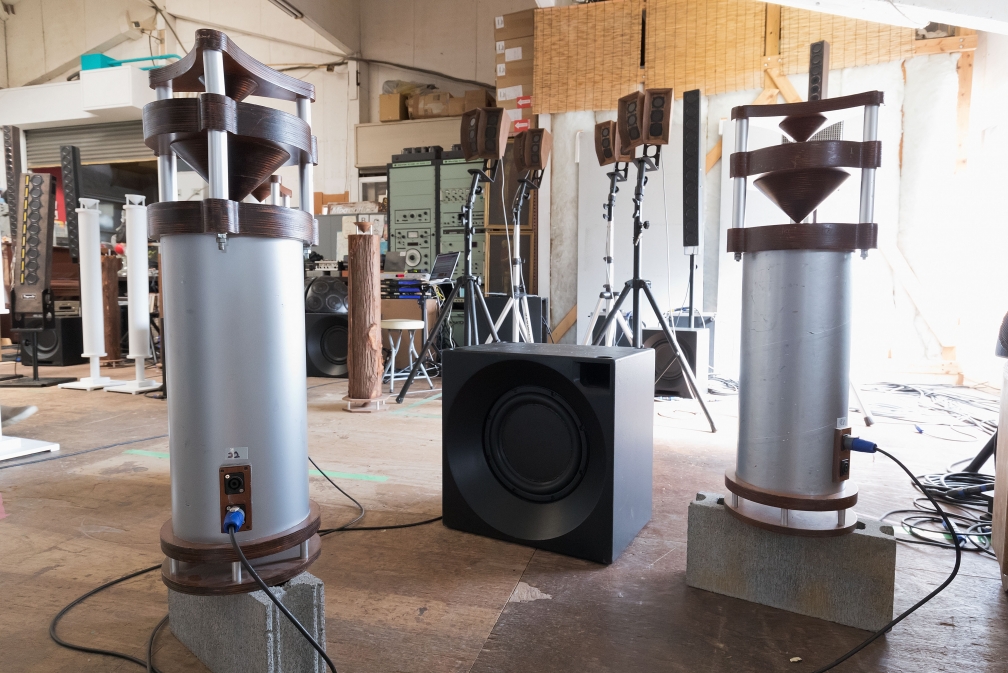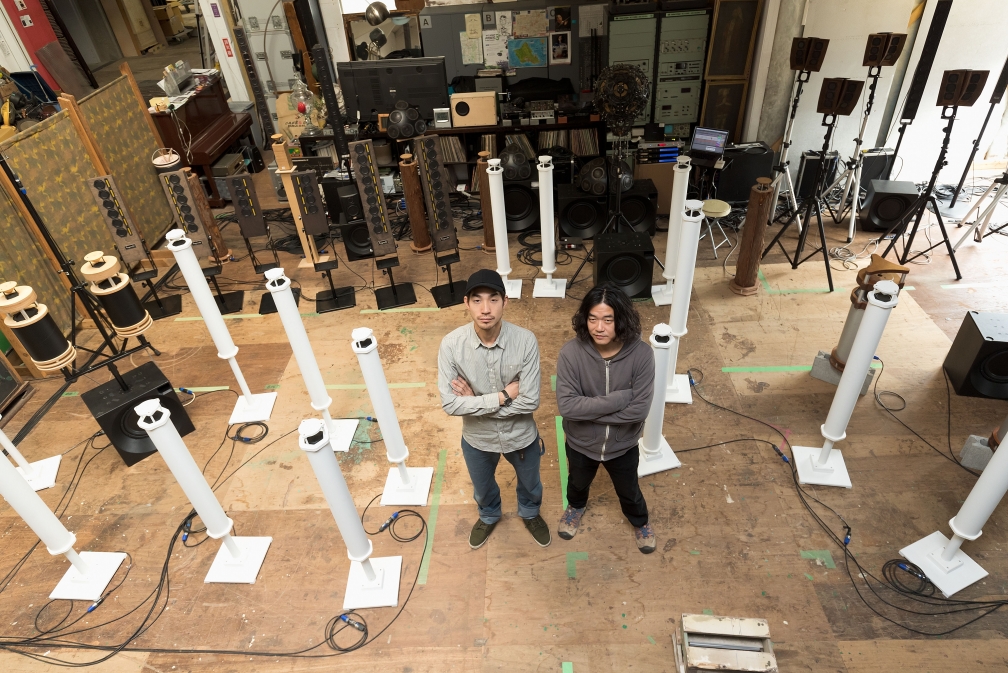Explore ‘Planets The Celestial Body Installation’ in Tokyo with Jeff Mills himself
We talked to Mills while he was in Tokyo inspecting his upcoming installation at TDME
Jeff Mills has just arrived at workspace located on the east side of Tokyo to do a final check on his ‘Planets The Celestial Body Installation’ that he will debut in Japan at the end of the month as a part of the Tokyo Dance Music Event 2017, which is returning to Shibuya for its sophomore edition from November 30th – December 2nd.
The multi-channel sound installation, in which Jeff Mills stands as the creative director, will reproduce the album 'Planets' with the number of channels in the setup exceeding 40ch and the arrangement of speakers based upon a real orchestra. The installation will see every instrument featured on the songs getting its own speaker so guests will be able to walk among the tube-shaped speakers and to hear individual parts, like TR-909 kicks, ride cymbals, synthesizers and more, closer than ever before.
'Planets'
was released earlier this year as a 9-track “electronic classical” album about the "[nine] planets of our solar system, including the portions of space in between the planets" and merges dance with classical sounds around the theme of the solar system’s nine bodies. Mills, who made his debut in Detroit as a scene stalwart in 1980, has said in previous interviews that he still considers Pluto as part of his Planets after it was demoted to a dwarf planet in 2006.
The sound system will be lent by Koji Fujita from Hiraya Access and Taguchi, one of Japan's finest woodcraft speaker producers and whose speakers are famously installed in Japanese venues like Vent, Ageha and more. The original concept of this installation is based on Symphony Canvas (R) by Tsukasa Miyamoto.
Take a look at the gallery above for behind-the-scenes photos of the setup as his team on the ground helps build the installation to life and read on for words with Mills about the new project, touring the music of 'Planets' this year and the impact Japan has had on his career.
You’ve been touring Planets for most of 2017. How have the shows been so far, in general?
JEFF MILLS: They’ve been good, good. I think all of the shows since the debut have been full and sold out. We’ve done quite a few since we started. We did a string of seven shows almost immediately after the release of the album. We brought it here to Japan, we’ve done a few other countries...it has been quite an active project.
In addition to that, the performances, we’ve been working with other artists. Bringing them into the concept for different interpretations of the nine planets. Just working a lot to touch as many people as we can with the idea of the planets of the solar system.
How were the Japan shows, specifically?
Good, they all went very well. It was the result of many, many years of planning, to bring a classical electronic concert here. So we were lucky enough to make those plans.
For those not as familiar with Planets, could you tell us a bit about the genesis of this project? What themes did you want to explore?
The objective of Planets was to mix classical and electronic music to the point where they become indistinguishable. From that, perhaps, it could be recognized as something different, something new — something representative of the time we are in. Not of last century, or even the last few decades. It’s really the result of all the hard work of many electronic artists and classical performers. Basically, I wanted to emphasize this point of progression, and how we’ve evolved to this point. It was inspired by Gustav Holst’s “The Planets,” in some ways, but my idea was to create a completely different soundtrack all together. Just referring to Holst and his narrative of using Greek mythology to explain the nine planets — well, six planets at that time — was thought about, but I leaned more towards scientific fact on how to build the tracks, how it would sound like.
You’ve done a lot to bridge the worlds of classical and electronic music together. How does a sound installation like this one fit into that?
It just broadens the concept and the idea greatly. Not to replace a live orchestra, but it gives a very good representation of what the project is really about. From a conceptual point of view, this idea of all these speakers and being able to walk in between them and experience it in a more immersive way. It’s a completely different experience most people can’t really experience — you know, like walking through and being close to an orchestra. It broadens the concept considerably. And the more places that this can be experienced, the more people we think it can help.
When did the idea for this installation start to come together?
It was an offer from people here in Japan, who knew about the project. And the extensive production that we went to in order to materialize it — all of the editing and the mix down at Abbey Road Studios, and everything else that made it possible so we could translate and transform this score. And it was accessible. It was independently produced, so there were no rights issues we had to deal with. It was very easy to work with.
You’ve also worked on other installations, such as one at Sonar, in the past. What are your motivations on working on this installation?
When you’re talking about subjects like planets, you’re talking about other worlds, like the one we know of our own. It’s quite important that the effect of an installation like this has to be effective. It has to be believable. It has to affect the senses as profoundly as possible. I think with this amount of speakers, this amount of space, and the way it is presented, where the listener can walk up to any speaker and experience what the musician was playing. And all that you hear is based off of scientific fact. Not just an orchestra playing Beethoven. But there is a calculation, an equation, to what musician is actually playing. You know, it’s quite an elaborate installation. It should have an effect.
This installation is exclusive to the Tokyo Dance Music Event at the end of the month. Why do you think there haven’t been many conferences akin to the Amsterdam Dance Event in Japan before? What benefits could they bring to the community here?
I think any event where you bring people together from different places — even just domestically — is always good. Just the whole idea of getting people together is always a plus. It’s not easy, which is maybe why you don’t see many festivals last. It takes a lot of cooperation, it takes a lot of money, it takes a lot of energy and resources, in and outside of the market to make happen. It takes time. But when it happens, well, it does a lot of good. In my career, electronic music really started from festivals like this — New Music Seminar in New York, in the late ‘80s.
This isn’t the first electronic music festival I remember in Japan, in Tokyo. I remember one — it was called like “Tokyo Music Days” — back in the ‘90s. There were several, a few attempts to have these fairs, you know. Timing is important. But yeah, the industry thrives, and there is a constant flow of activity. And because of that, it is possible to find locations to talk about and present things. To explain things, to show things off.
How has Japan and the country’s music scene influenced you over the years?
Each producer and DJ that I know has a different story, but for me, for many, many years, this was a place for experimentation. I brought many different ideas to test here in Japan for decades. If they worked, we’d take them to Europe. It was really a testing ground, and still is in many ways. Because I could always count on a certain amount of people would have a deeper interest in this, so I always like to come and prepare something new. Or if not music, it would be something else.
I’d also come here to learn. It was a very important element of the process of my career. And many other musicians, as well. In some ways, I think it shaped the electronic music industry, quietly. When things weren’t going well in Europe, Japan was always consistent. For many other artists, you could depend on it, because of the dedication.
Check out ‘Planets The Celestial Body Installation’ on Thursday November 30th and Friday December 1st in
Shibuya's Hikarie
Hall B. Find the full program for the second Tokyo Dance Music Event here.
[images via by Ryu Kasai]



